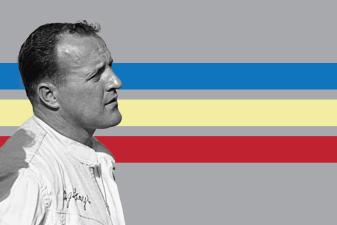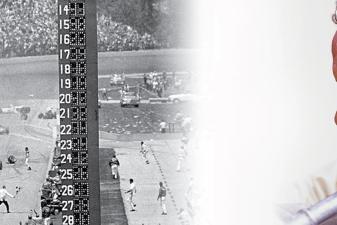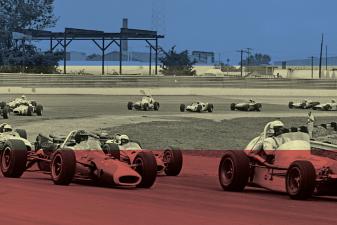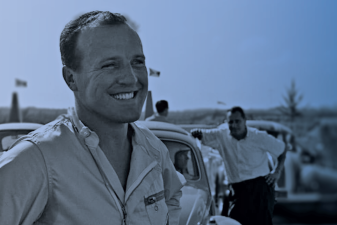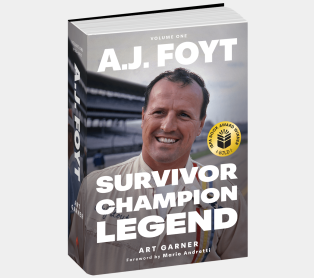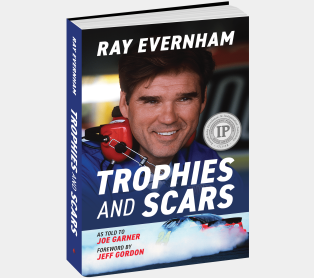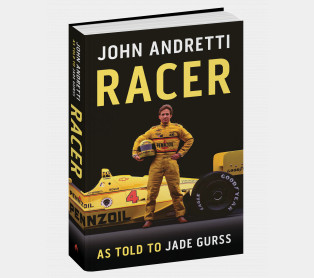Scared Shitless: Back in the Racing Game

The following is an excerpt from A.J. Foyt: Volume 1 by Art Garner. Anthony Joseph “A.J.” Foyt Jr. is one of the greatest race car drivers in history—some would argue the best—and he has the statistics to back it up. Numbers alone can’t begin to tell Foyt’s story. Through tireless research and extensive interviews with the biggest names in motorsports, author Art Garner has compiled an unprecedented look at the life and career of one of America’s most popular sports heroes. In this excerpt read about Foyt's decision to team up with Joe Leonard in 1967.
Having made the decision to return in 1967, A.J. Foyt set about making wholesale changes to his racing operation.
He rejected an offer from Andy Granatelli to drive a new turbine-powered car that the STP maven said he’d secretly been building the past two years. “Why the hell would I want to do that?” he barked at “Granabelli,” as Foyt liked to call him. “I’m building two new cars of my own.”
The Coyotes—one all-new car and an overhauled version of the original—were under construction in Houston instead of Long Beach, California, where the “Lesovsky Lotus” and original Coyote were created. “Nothing was getting done out there when I wasn’t around,” he said. “So I decided to move everything to Houston.”

Family friend Jimmy Greer, whose Houston business empire was taking off, had acquired several warehouses to support his operations and rented one on Toledo Avenue to Foyt. He decided to run a two-car team again, with Joe Leonard in the second car. Victor Morales returned to serve as Leonard’s chief mechanic and brought several of the “Tamale Wagon” crew with him.
Leonard was a holdover from the second half of the 1966 season, having clicked for five top-five finishes in the races he’d started in the Eagle for Foyt. A.J. called him “Pelican Joe” because “All he did was swoop in and take our money.” More importantly, “he liked to race, he knew how to race, and he was a hellofa racer.”
Two and a half years older than A.J., Leonard had started racing motorcycles in the early 1950s, winning three American Motorcycle Association (AMA) championships and twenty-seven national AMA events on road courses and dirt and paved ovals. He’d twice won the Daytona 200, the Indy 500 of motorcycle racing.
"He liked to race, he knew how to race, and he was a hellofa racer.”
–A.J. Foyt
He began transitioning to four wheels in the early 1960s, running mostly USAC stock car races. He’d been working and driving occasionally for Ray Nichels when Foyt joined the team in 1964. Leonard had run a couple of Indy car races without a top-ten finish, but he remembered Foyt encouraging him to give it another try—in A.J.’s own unique way.
“Hey [Joe] you’re good,” Leonard recalled Foyt saying, “but I bet you’re afraid to drive an Indy car.” Foyt helped arrange for a ride at Phoenix late in ’64, a fifth-place finish. A.J. put in a good word with Dan Gurney, who was starting his team and looking for drivers. Leonard then went to work for Gurney and gave All American Racers its first Indy car victory before ending up back with Foyt.
Four cars were entered in the Indianapolis 500, two under the banner of Ansted-Thompson Racing for Foyt and, for the first time, two by A.J. Foyt Jr. for Leonard. All were sponsored by Sheraton-Thompson.
In NASCAR, Foyt signed on to drive a new Ford Fairlane in a handful of races for Banjo Matthews. In sports cars, Ford and Goodyear shifted him from the Holman-Moody team to one run by Carroll Shelby, which suited A.J. fine. He felt Holman-Moody’s strength was in stock car racing, while Shelby’s strength was sports cars. He was also happy to learn he’d be paired with Gurney for the upcoming 24 Hours of Daytona, although others questioned the wisdom of teaming two notorious hard chargers for an endurance race. As a result of Gurney’s recent signing with Mercury to drive its stock car and Trans Am entries, and the possibility Foyt might also run several races for the brand, their GT 40 Mark II would carry the Mercury logo at Daytona.
Finally—and most importantly—A.J. named “the only man I can trust” to oversee the entire operation. His father, Tony Foyt, had been serving as de facto crew chief since the departure of Johnnie Pouelsen, and the announcement made it official. Reluctant to make a full commitment to the role in the past because he didn’t want to give up his repair shop, Tony agreed to convert it to doing body work and other work for the team. The first race of the season was NASCAR’s Riverside 500, where the year got off to a bad start. Billy Foster, whom many blamed for the first-lap accident at Indianapolis the year before, was killed when his brakes failed in practice and he hit the Turn Nine wall.
After qualifying seventh, Foyt moved to the front and was among the early leaders before rain stopped the event and postponed it until the following Sunday.
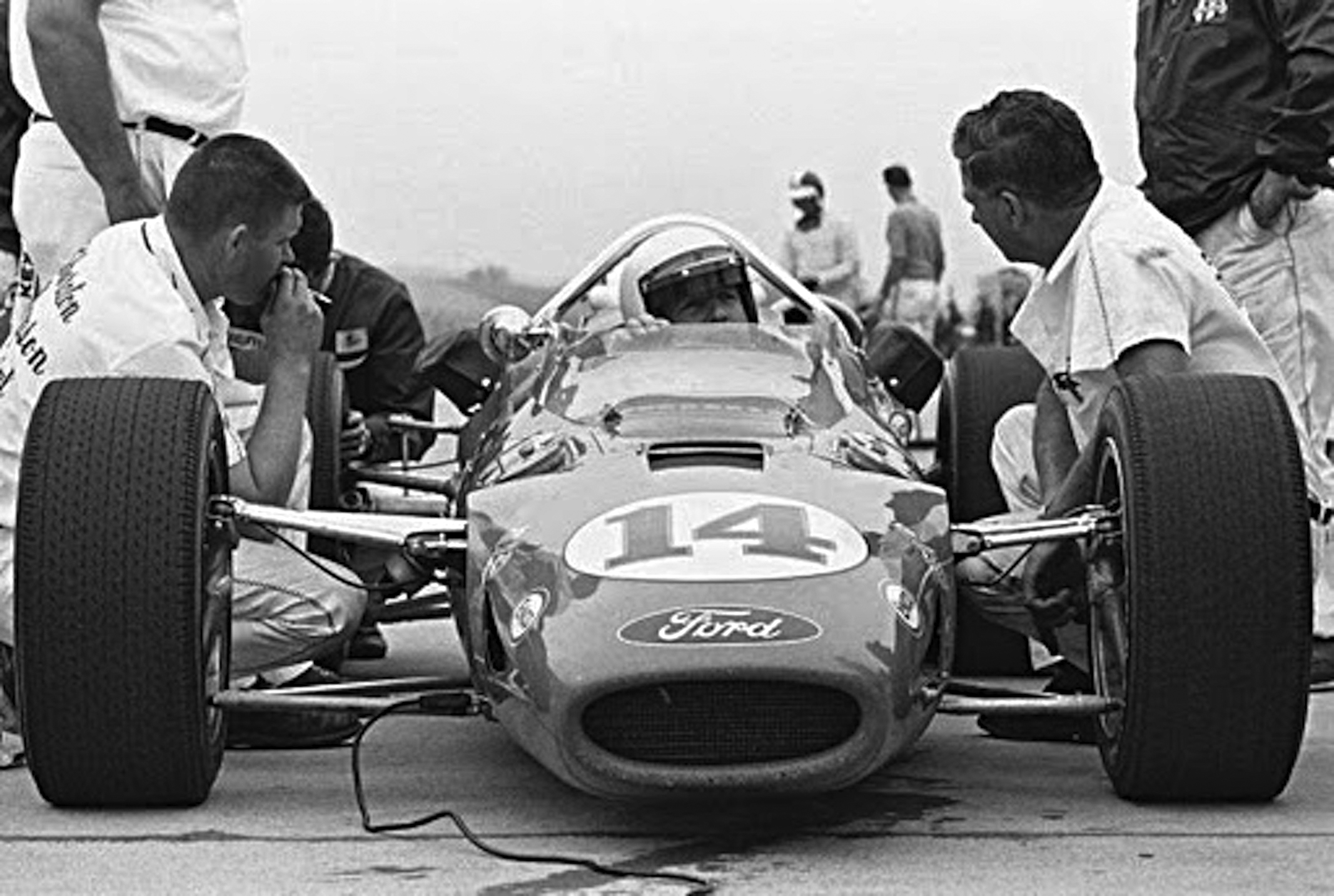
During a week of inaction, a small pool of oil formed under Foyt’s car. Rules said a car couldn’t be worked on during the red flag period and when the race restarted under yellow, Foyt came into the pits. While the crew added oil, Banjo crawled under the car and did the best he could to plug the hole. It worked for a while and Foyt moved toward the front again, until a telltale cloud of smoke began to trail the car and he parked it for good, Parnelli Jones going on to win the race.
Despite failing to finish, it was an encouraging start to the season. Foyt seemed to be his old self, joking with drivers and crew members and yelling at reporters who’d written his racing epitaph during the offseason. Only one problem remained. “I was scared shitless every time I got in the car,” Foyt said in his autobiography.
“The start of the 1967 season was the worst of any for me. I made myself come back. I could have retired at that point and lived very comfortably for the rest of my life. I was in good enough financial position to do it. But I wanted to race. “I had mixed emotions. I wanted to win, but I wasn’t sure it was all worth it. I made myself drive harder than I really wanted to. I made myself get back on the horse that threw me.”


